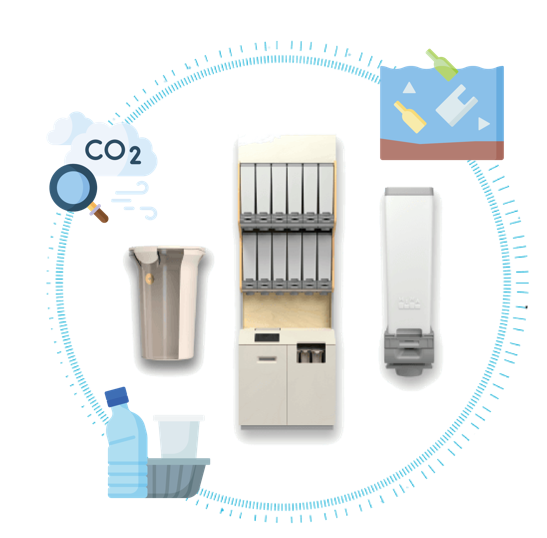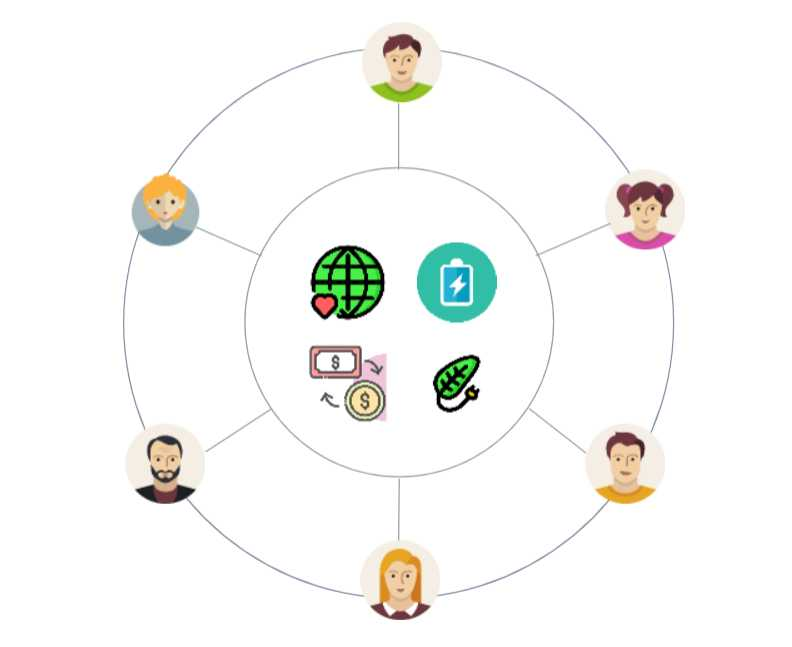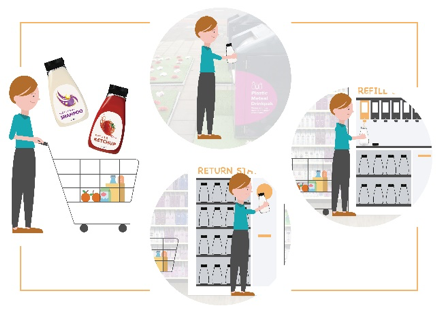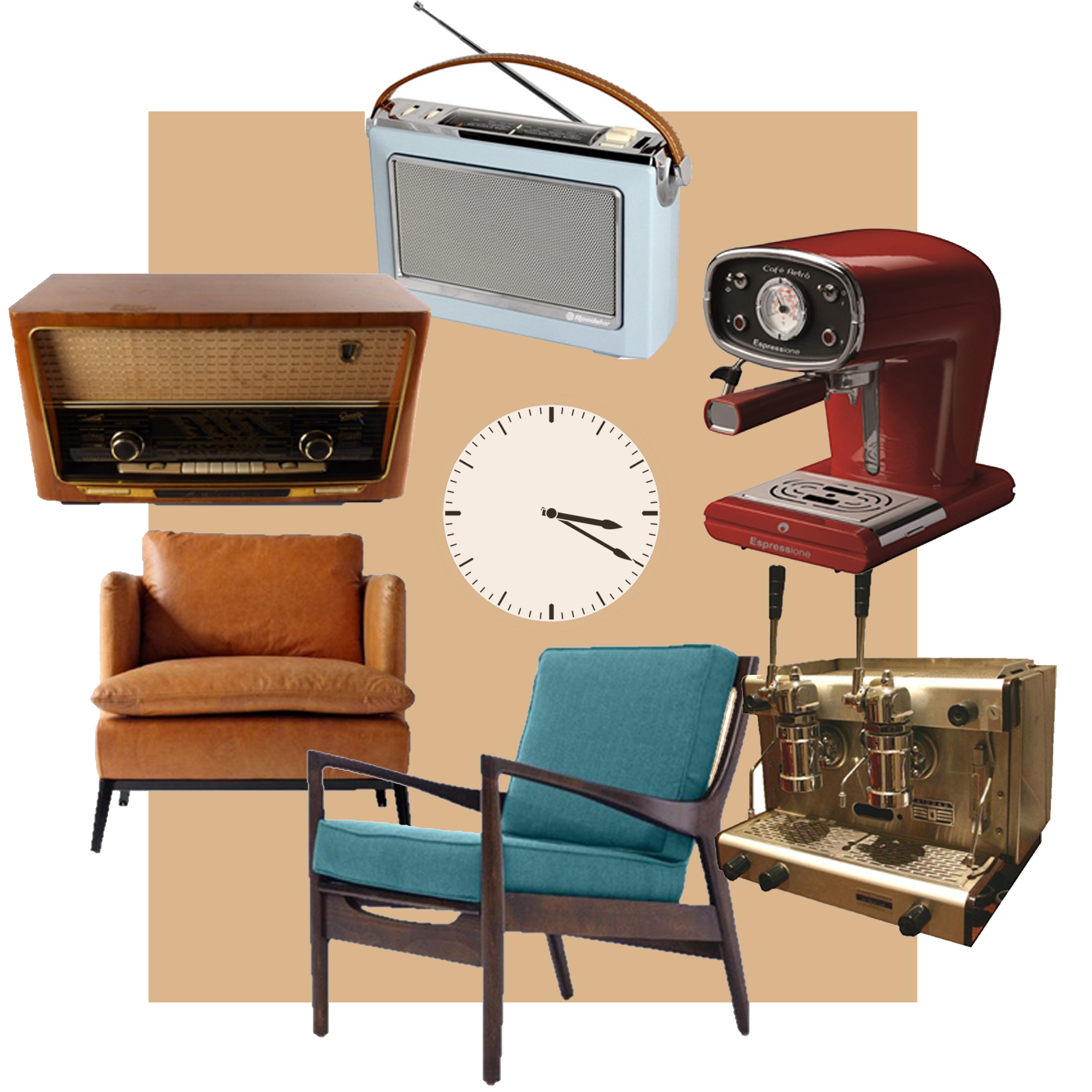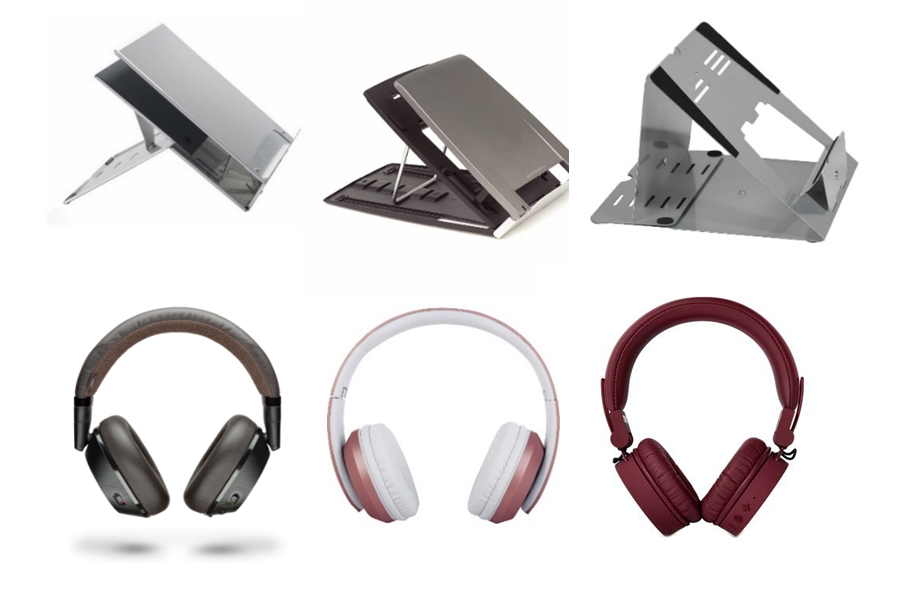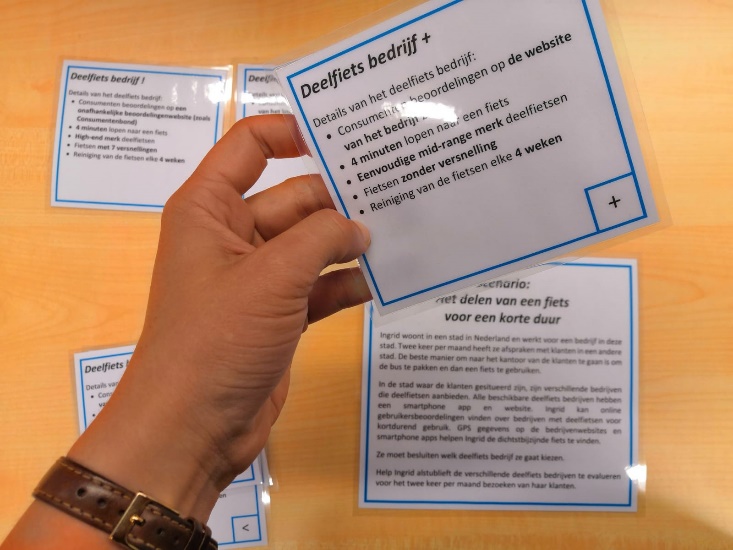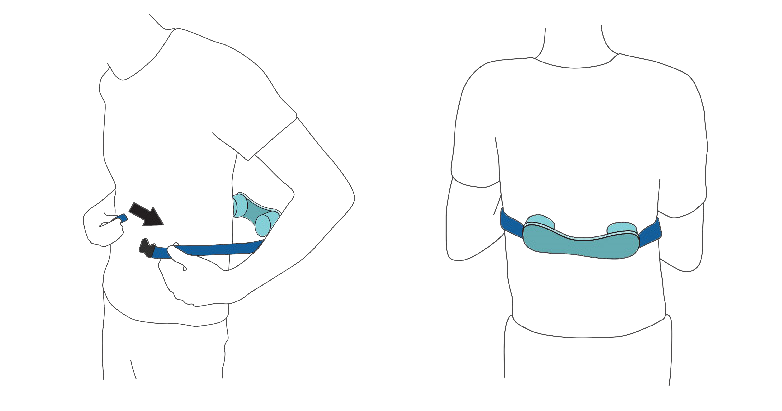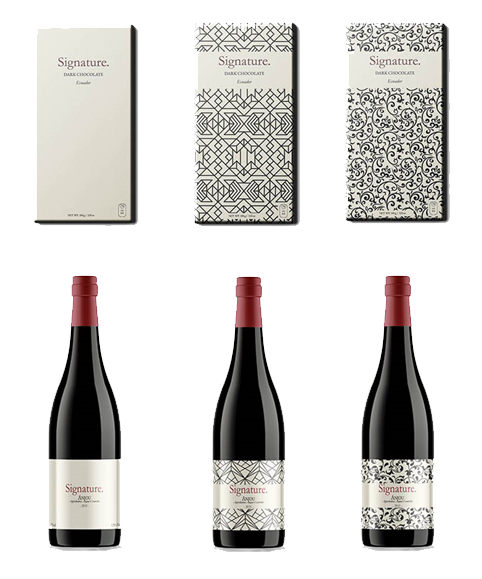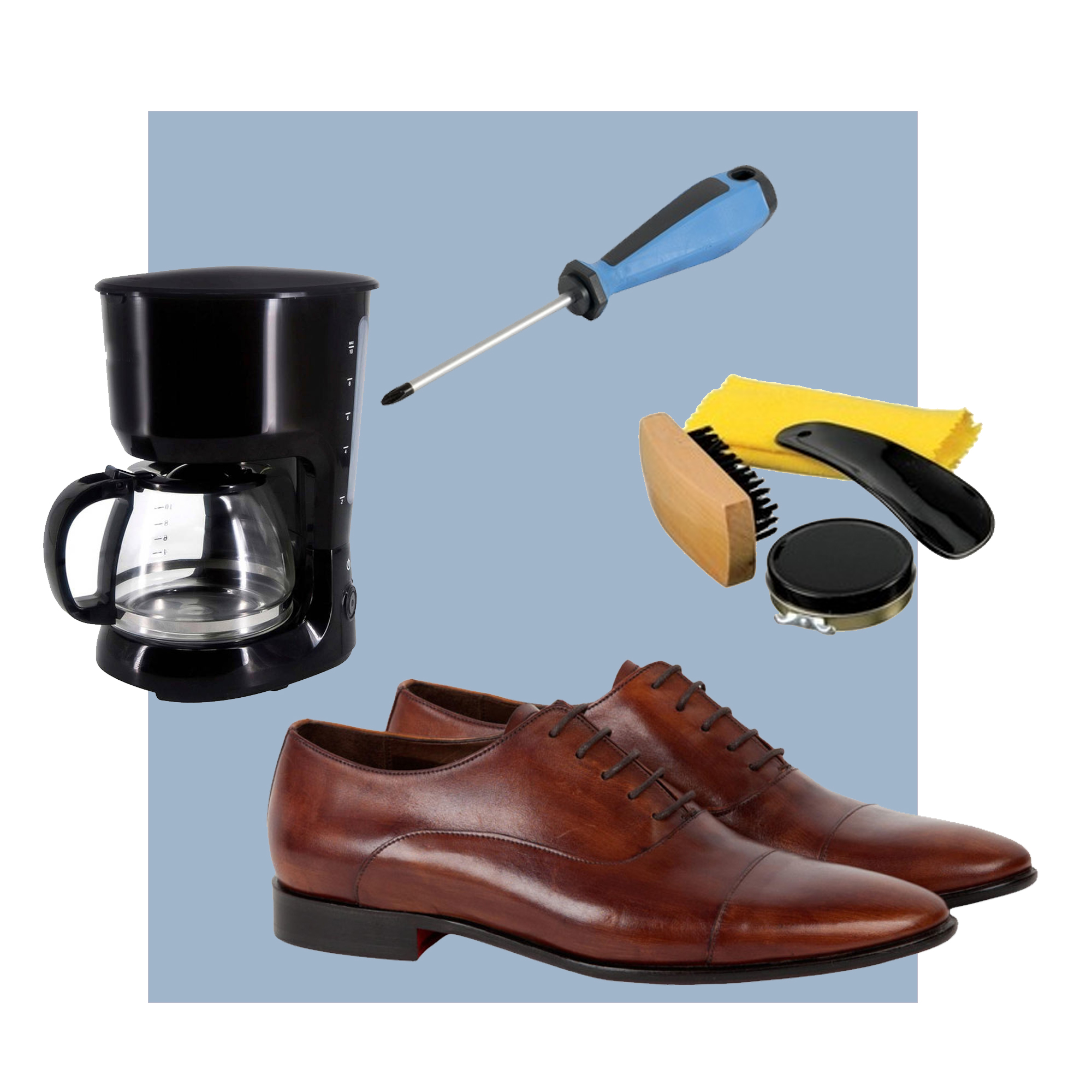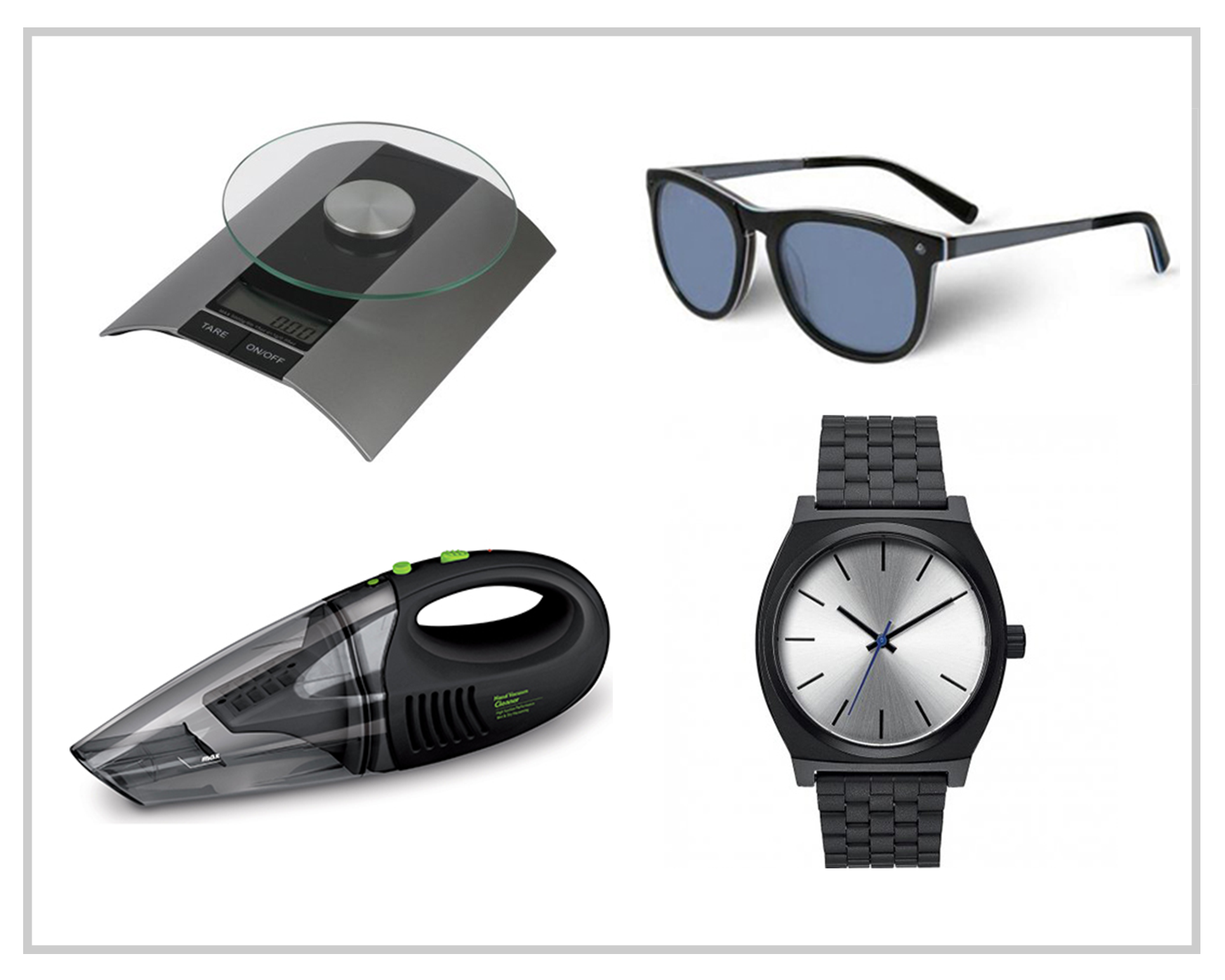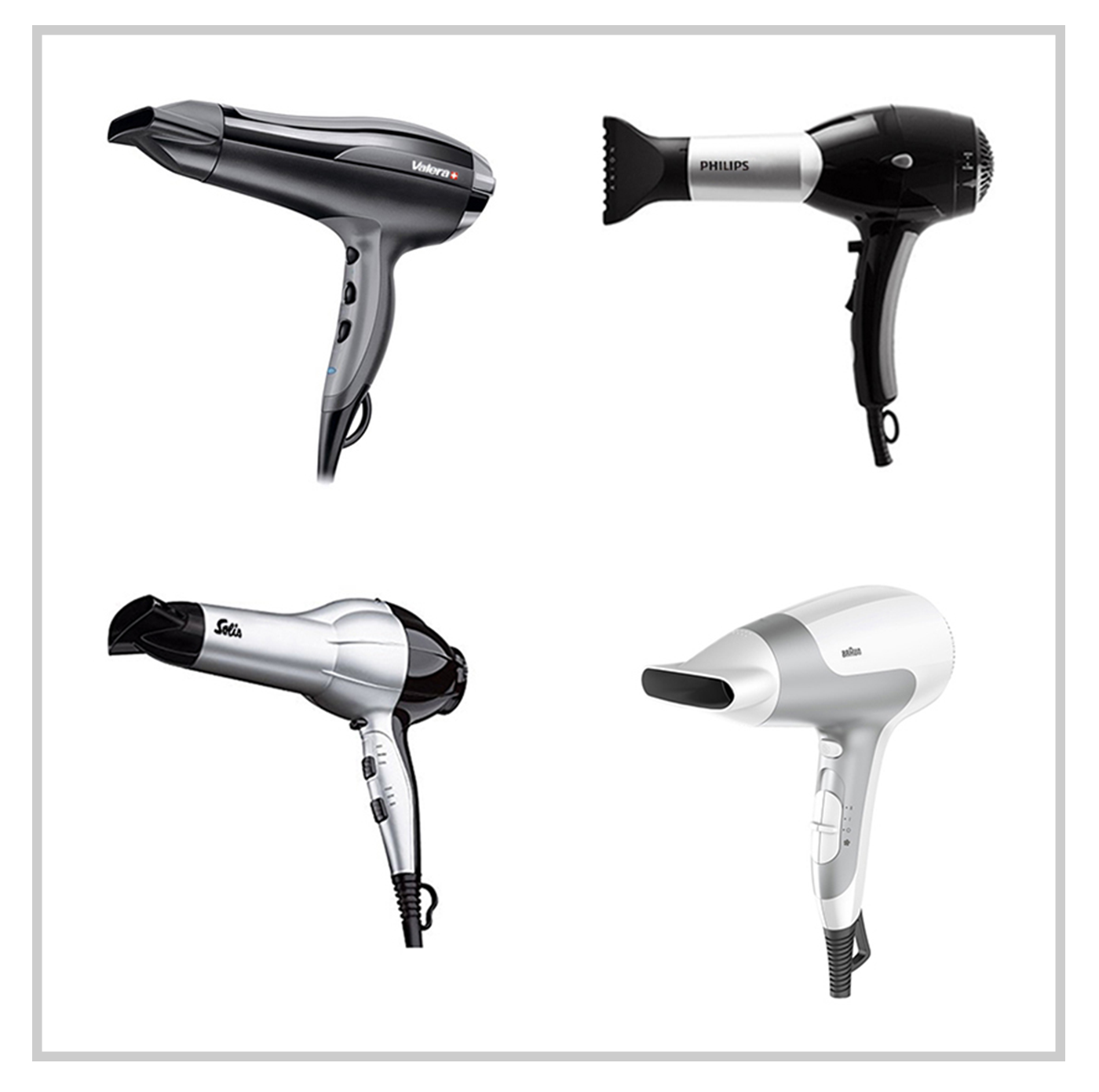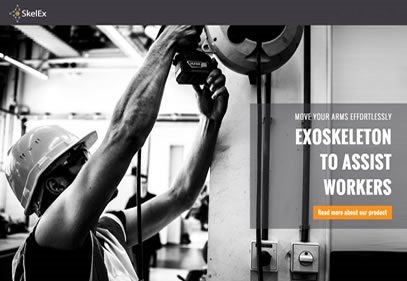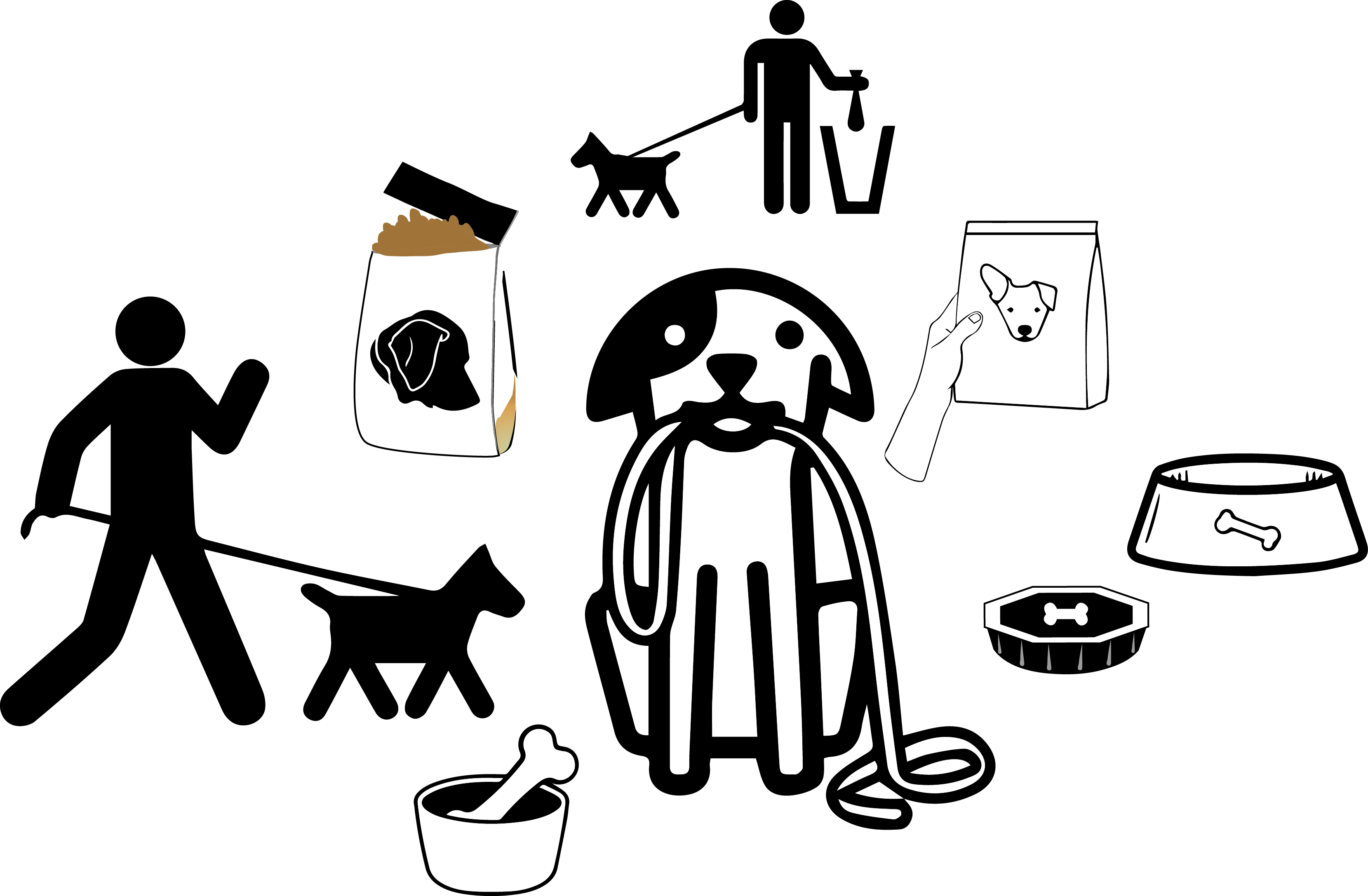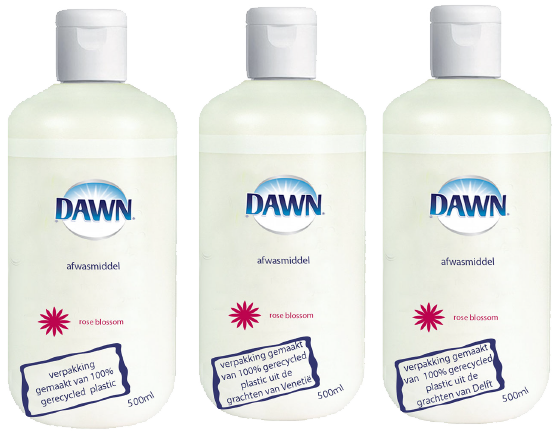Research
Designing with “Artificially Intelligent” Stakeholders
Human-centred design practices have been instrumental in creating meaningful products and services we encounter in our daily lives. However, proper user research requires a lot of time and involvement of groups of stakeholders. Recruitment and scheduling can be challenging and time consuming in practice. Artificial Intelligence (AI) could address this issue as a tool to rapidly test assumptions before finding real world participants. We are exploring AI ChatBots as representatives of user groups as preliminary user research tools.
Practical information regarding this research:
The ChatBots talk and behave like predefined user groups. Participants will be conversing with them to gather insights about the real populations they represent. We aim to conduct a study in January - March 2023 to explore how AI-powered synthetic stakeholders impact design activities. As a panel member, you will automatically receive an invitation to participate in this study. We hope you are interested in participating in this study to explore AI tools for design. If you want to participate, but are not a member of the panel yet, you can register here. The study will be conducted in English.
- Target group: 18-75 year old
- Date: January - March 2023
- Duration: 45 - 60 minutes
- Methods: Web interface + survey
Context:
A PhD Research by Eric Heng Gu under the supervision of Dr. Senthil Chandrasegaran and Dr. Peter Lloyd
Upcoming research is featured above.
Research on Temporality of Living Materials
The need for decreasing the usage of non-renewable resources in design have brought attention to the usage of living organisms as a potential resource for new material and product development. This study is about the representation and communication of unique material qualities of living materials to facilitate a holistic understanding of living material experiences.
This study helps us to explore which tools (material samples and video) can potentially help to represent and communicate dynamic temporal qualities of living materials in experiential characterization studies. This knowledge will be used to communicate living materials in user studies.
Method
Participants were invited to come to the Product Evaluation Lab to review a newly developed material and express their opinions through a questionnaire and an interview. It was an international study, so the entire study was conducted in English.
Context
A PhD study by MSc. Hazal Ertürkan under the supervision of Prof. Dr. Elvin Karana and Prof. Dr. Ruth Mugge.
Research on Refillable packaging system
Reuse is a more effective way to reduce packaging waste than recycle since more value of the product and functionality of the material are retained. However, reusable packaging systems will only be successful if consumers are willing to adopt them in their daily shopping. This research aims at getting insights from consumers’ real experience of a reusable packaging systems and at identifying barriers and enablers for consumers to choose a reusable packaging system as an alternative.
This research helps us to understand consumers’ attitudes to and behaviours while experiencing of a reusable packaging system. The results will not only enrich scientific knowledge about barriers and enablers in the reusable packaging system but also benefit societal practice. By helping the company understand users’ expectations and concerns in practice, they can improve the design attributes in the system to engage more users in a long term adoption.
A follow-up study will be conducted in spring 2022.
Method
Participants were invited to come to the Product Evaluation Lab to test out a refillable packaging system and gave their opinions through an interview. This was an international study, so the entire study was conducted in English.
-
Context
A PhD study by MCs. Xueqing Miao under the supervision of Prof. Ruth Mugge and Dr. Lise Magnier.
Research on user preferences in local electricity markets
This research helps to understand consumer preferences for electricity as a product. This is important because local electricity market is a new concept that is constantly evolving. By having the participants make a choice between three different electricity bundles, we can evaluate what the consumer preferences will be in these markets.
The results of this survey can be used to understand what the consumer preferences for electricity are in these new local markets. Thus, the markets can be designed according to these consumer preferences.
Method
An online questionnaire was sent to the panel members.
Context
A PhD research by Irena Dukovska (TU/e) and Aitazaz Ali Raja (TUD) under supervision of dr. Sergio Grammatico (TUD), dr. Nikolaos Paterakis (TU/e) and prof. dr. Han Slootweg (TU/e).
Research on the perceptions of product packaging
This research helps with the understanding of consumers' perception on different packaging designed for fast-moving consumer goods which are sold in the supermarket. By comparing with disposable packaging, we would like to explore the feasibility of two different reusable packaging systems for different products and understand what features could be improved to increase consumers' acceptance on reusable packaging systems.
The results of this questionnaire help to analyse the drivers and barriers that affect consumers' perception and acceptance on different type packaging (systems). This will be used to build a base of knowledge that will be communicated to current and future designers and market to improve feasibility of different reusable packaging systems. Thus, to promote circular economy and sustainable consumer behaviour on the packaging issue.
Method
An online questionnaire was sent to the panel members. As this was an international study, the entire study was conducted in English.
Context
A PhD research by MSc. Xueqing Miao under supervision of prof. dr. ir. Ruth Mugge and dr. Lise Magnier.
Research into the evaluation of refurbished headphones
Manufactures of consumer products are facing the challenge of becoming more and more sustainable. One possibility is to refurbish products. Refurbished products are products that have been used before and which, thanks to refurbishment, are like new again. The devices are extensively checked, tested, cleaned, repaired, replaced and upgraded where necessary. Despite the extensive cleaning process, consumers experience discomfort with refurbished products because they fear the product contains traces from a previous consumer. This study investigates the factors that influence the degree of contamination (e.g. usage marks such as scratches, replaced ear cups) of the refurbished products.
The results can be used to understand how consumers react to refurbished products and how we can design attractive products in a refurbished state.
Method
An online questionnaire was sent to the panel members.
Context
A PhD research by drs. Theresa Wallner under supervision of prof. dr. ir. Ruth Mugge and dr. Lise Magnier.
Research into the evaluation of a consumer product (2)
This research is the second study in the application of new materials such as fungi and bacteria for different kinds of consumer products. With these materials products can be grown in a desired shape. Some companies already experiment with these materials from a sustainable point of view, but more insight is needed into possible applications. Also, there is little known about the responses these materials evoke among consumers. During this study, the results were tested more extensively.
The results can be used to apply these natural materials in consumer products. It is important to know which materials and which applications elicit certain responses, in order to be able to make recommendations about which products to launch.
Method
An English survey was sent to the panel members.
Context
An international research by dr. ir. Ellis van den Hende (TU Delft), dr. Chris Simmis (University of Portsmouth) and prof. dr. Erik Jan Hultink (TU Delft).
Research into the evaluation of a consumer product (1)
This research is the first study on the application of new materials such as fungi and bacteria for different kinds of consumer products. With these materials products can be grown in a desired shape. Some companies already experiment with these materials from a sustainable point of view, but more insight is needed into possible applications. Also, there is little known about the responses these materials evoke among consumers. In order to be able to compare these responses with a more common material, we also tested with styrofoam.
The results can be used to apply these natural materials in consumer products. It is important to know which materials and which applications elicit certain responses, in order to be able to make recommendations about which products to launch.
Method
An English survey was sent to the panel members.
Context
An international research by dr. ir. Ellis van den Hende (TU Delft), dr. Chris Simmis (University of Portsmouth) and prof. dr. Erik Jan Hultink (TU Delft).
Research into the perception of objects with behaviour
In everyday life, we increasingly encounter objects that exhibit behaviour. For example robots, self-propelled vehicles, and interactive products and services. In order to be able to improve their future design, knowledge is needed about how people perceive and understand these kind of objects. This online research was set up to learn more about this.
The results will be used for scientific research and educational purposes. The new acquired insights will help designers to design future robots and intelligent products in such a way that they are more in tune with people's perceptions. As a result, they will be experienced as more pleasant and friendly to use.
Method
An online survey with video footage was send to the panel members.
Context
An international research led by dr. ing. Marco Rozendaal (TU Delft).
Research on the reparability of household appliances (1)
Household appliances are very valuable. Product failures can be a reason for replacement. This study examined to what extent the design of a product can be improved in order to keep household appliances viable. The concept of repairs was extensively researched by means of an online survey.
The results were used to help with the analysis of the positive and negative features that affect reparability of current products. This was used to build a base of knowledge that will be communicated to current and future industrial designers to improve repairs in household appliances.
Method
An online survey was sent to the panel members. As this was an international study, the entire study was conducted in English.
Context
This was the first study of Circular Product Design PhD students, Beatriz Pozo Arcos and Sagar Dangal.
Research on the reparability of household appliances (2)
Household appliances are very valuable. Product failures can be a reason for product replacements. In this research we investigated how well household appliances are designed for repair by the consumer. The research has helped understand what users are confronted with when repairing a household appliance.
After the online survey, people were selected to participate in the follow-up study on repairing products. The results were used to help with the analysis of the positive and negative features that affect reparability of current products. This was used to build a base of knowledge that will be communicated to current and future industrial designers to improve repairs on household appliances.
Method
Participants were invited to come to the Product Evaluation Lab to repair a household appliance. As this was an international study, the entire study was conducted in English.
Context
This was the follow-up study of Circular Product Design PhD students, Beatriz Pozo Arcos and Sagar Dangal.
Research into emotions associated with products
Manufacturers of consumer products face the challenge of becoming more sustainable. One option is refurbishing products. Refurbished products are devices that have been 'used' before and that, thanks to a refurbishment, perform like new again. The devices are extensively checked, tested, cleaned, repaired, replaced and upgraded where necessary. However, little is known about the emotions these products evoke among consumers and how they justify their intended purchase. This study investigated which specific emotions play an important role when buying refurbished products as opposed to new or second-hand ones.
The results were used to understand how consumers respond to refurbished products. By better understanding the emotions evoked by these products, we can help designers and companies anticipate these emotions, thus increasing the propensity to buy refurbished products.
Method
An online survey was sent to the panel members.
Context
Internal research for scientific publication.
Research into the replacement of products
This research was about the replacement of electronic household products. Research has shown that the expected lifespan of products has decreased over the years. The longer products last, the fewer products will end up in the waste. However, there are several reasons to replace products (e.g. because they are broken or lack functionality).
The aim of this research was to study the underlying motives of replacing products. The research contributed to the development of a test program for products, which can be used to estimate their lifespan in advance. This way, design guidelines can be developed for more sustainable products and sustainable consumer behaviour can be promoted.
This research has revealed insights into different reasons for replacing household products with new ones. These insights will be used to research sustainable consumer behaviour and scientific research will be published based on the interviews.
Method
Panel members were interviewed at home.
Context
PhD research carried out by ir. Renske van den Berge under supervision of prof. dr. ir. Ruth Mugge and dr. Lise Magnier.
Research into refurbished second-hand, antique and retro products
This study was about the perceptions of antiques and refurbished products. Refurbished products are considered a more sustainable alternative to new products as less new resources are used (MacArthur, 2013). However, research has shown that people have negative associations with refurbished products and are less likely to buy them (Mugge, Jockin & Bocken, 2017).
The goal of the research was to identify positive characteristics of antiques that can be used to develop design guidelines for second-hand products and ultimately promote sustainable consumer behaviour.
The results helped gain insights on antiques and refurbished products. These will be used to study sustainable consumer behaviour. Scientific research will be published based on the interviews.
Method
Panel members were interviewed at home.
Context
PhD research supervised by prof. dr. ir. Ruth Mugge.
Research into the sharing and renting of products
Using products via renting, sharing and leasing schemes rather than buying them can have positive effects on the environment. In this study, we investigated how acceptable consumers find different aspects of these products and services.
The results of this study provide us with threshold values of attribute acceptance. The results are important for a follow-up study on the relative importance of these aspects for different services. The study facilitates the design of services that are sustainable and attractive for consumers.
Method
An online survey with questions about the sharing and renting of products was sent to the panel members. As this was an international study, the entire study was conducted in English.
Context
This PhD research was a part of a European research project and was carries out by a PhD student at the TU Delft, supervised by prof. Jan Schoormans and dr. ir. Ellis van den Hende.
Research into the role of visual product design in online purchases
With this research we hope to gain insight into the role of product appearance (visual product design) in consumer purchase decisions within an online environment. Product appearances can have aesthetic and symbolic value for consumers, can communicate functional characteristics, give a quality impression (practical value) and can communicate ease of use (ergonomic value). However, the consumers see these roles differently in different shopping outlets, such as online shopping. In this research, we want to find out how the product appearance influences the consumer’s purchasing behaviour in digital environments, such as e-commerce websites.
The intention of this research is to increase the understanding of the influence of product appearance on consumer purchasing behaviour in digital environments.
Method
Panel members were invited to come to the Product Evaluation Lab. They were asked to choose a couple of products online. Afterwards an interview was conducted.
Context
A graduation project supervised by prof. Jan Schoormans and dr. Marielle Creusen. The results will be used for scientific publication.
Research into the sharing and renting of products
Using products via renting, sharing and leasing schemes rather than buying them can have positive effects on the environment. In this study, we investigated how acceptable consumers find different aspects of these products and services.
The results of this study provide us with threshold values of attribute acceptance. The results are important for a follow-up study on the relative importance of these aspects for different services. The study facilitates the design of services that are sustainable and attractive for consumers.
Method
Participants were invited to come to the Product Evaluation Lab to rank services according to their preferences. Afterwards an interview was conducted.
Context
This PhD research was a part of a European research project and was carried out by researchers at the TU Delft, supervised by prof. Jan Schoormans and dr. ir. Ellis van den Hende. The results will be used for scientific publication.
Research into ocean plastic products
Manufacturers face the challenge of producing more sustainable products. At the same time, there are initiatives to clean up ocean plastic waste. This creates opportunities to recycle ocean plastic into new products. However, little is known about how consumers react to the appearance of products made from recycled ocean plastic. This study investigated possible physical preferences for a select group of products.
The results are used to understand how consumers form their perceptions on certain products made from recycled oceanic plastic. With the results, guidelines were set up for designers and companies for the development of these products. By doing so, we want to encourage designers and companies to use recycled ocean plastics in new product development.
Method
Through an online survey, participants were asked to rate a number of products made of ocean plastic.
Context
A graduation project supervised by dr. Lise Magnier and prof. Jan Schoormans. The result of this research will be published in a scientific journal.
Research into the comfort and usage of a prototype for self-monitoring
In this study, a prototype developed for patients with heart failure and COPD was tested. The device will be used for self-monitoring and early detection of acute problems. Usability and comfort of the device are important to ensure that people continue to use it.
The research is designed to find key improvement points related to the comfort of the product. In addition, it was important to find the most ideal position for the device.
The most important results are summarised (anonymously) in the project thesis. The final product will be used by patients with heart failure and COPD.
Method
Participants were invited to TU Delft to evaluate a prototype for the self-monitoring of heart and lung problems. The prototype was fitted and then assessed on usability and comfort. The participants were given the opportunity to explain their findings in a short interview. As this was an international study, the entire study was conducted in English.
Context
A graduation project from the TU Delft, in collaboration with De Hartstichting and Philips Design as part of the CardioLab.
Research into what influences consumers choice about product care
In this online survey, questions were asked about how people take care of their products. Because of the large amount of participants, the questionnaire was further evaluated for efficiency.
The aim of the research was to develop a questionnaire in which people could be asked about how they take care of products. Many products can be used for longer if the owner carries out regular repair or maintenance. The overall aim of the research is to find out what influences people's choice in how they take care of their products. The results of this survey are used to draw up an efficient questionnaire. There will be a follow-up to this study.
Method
A large online survey was conducted. As this was an international study, the entire study was conducted in English.
Context
PhD research in collaboration with the TU Delft and the Salzburg University (Austria).
Research into coffee packaging and product perception
In this online study, people were asked questions about coffee packaging to see what perception people have on a product based on its packaging. Packaging has an important role in how people perceive products.
The aim of this study was to determine the influence on the perception of the brand and the product. Different styles of packaging were tested as well as the founding date of the brand.
The results of this study will be used to describe modern packaging design. We also aim at developing guidelines for designers to communicate effectively to consumers.
Method
This study was carried out via an online survey. Participants were shown coffee packaging and answered questions about it. Different groups were invited to participate in the survey and each group was shown different packaging. As this was an international study, the entire study was conducted in English.
Context
This research was a collaboration between the TU Delft and the Montpellier Business School in France.
Research into the perception of packaging
Visual features of packaging play an important role in how people perceive products. In this study, we investigate the influence of graphic design on perceived taste and brand perceptions. Ornaments have never been studied in marketing. This study was conducted in order to investigate the influence of their shape.
The results of this research will be used to show how ornaments are able to convey meanings. In doing so, guidelines are created for designers to communicate effectively to consumers.
Method
Participants were asked to fill in an online survey. As this was an international study, the entire study was conducted in English.
Context
A graduation research in collaboration with the TU Delft and the Montpellier Business School in France.
Workshop session for testing prototypes for research into ingenuity among seniors (65+)
This is the second part of the 2017 research into Ingenuity among senior citizens. In the design phase of the research, improved insights have been obtained on how older people used the three prototypes of the product, Connected Resources, in unique and different ways.
The aim of the prototypes are to support ingenuity and enable older people to cope with everyday challenges. We believe that products and services for older people do not need to have a single function, but can support a wide range of situations.
The results have been published as scientific articles to contribute to the gerontological society and to designers. Design students have translated the results of the workshop into a series of drawings. The drawings show different situations in which Connected Resources can be used. Masako Kitazaki further developed the prototypes for her graduation project. A book has been written based on this project: ‘Resourceful Ageing: Empowering older people to age resourcefully with the internet of things’. The entire project has won an NGI 2019 prize for its extraordinary contribution to a better digital life. For more information about the project, please visit http://www.resourcefulageing.nl/.
Method
During a workshop session the participants were asked in which different ways the prototypes could be used. In addition, an interview was held.
Context
Research TU Delft as part of the NWO project, in collaboration with Avans Hogeschool Breda.
Research into the care of coffee machines and leather shoes
Many products can be used for longer if the owner carries out regular repair or maintenance. In our research, we want to find out what influences people’s decision to take care of their products. This is a follow-up on a different study from 2018 about taking care of bicycles.
This online survey is part of the development of a questionnaire intended to ask people about their care of products. Some questions are based on existing questionnaires, while others are developed by ourselves. This survey allows us to compare the results of different surveys, and ensure the quality of our questions.
Method
Participants were asked to fill in an online survey. As this was an international study, the entire study was conducted in English.
Context
PhD research in collaboration with the TU Delft and the Salzburg University (Austria).
Research into the transfer of meaning from ornaments to a product
Visual features of the packaging have an important role in how people perceive the product. We investigate the influence of graphic design on the perceived taste and brand perceptions.
In this study, questions were asked about wine and chocolate packaging. However, ornaments were never studied in marketing. That is why this research was conducted to study the influence of ornaments based on their shape.
The results of this research are used to show how ornaments can convey meaning. The aim is to create guidelines for designers on how to communicate effectively to consumers.
Method
This research was carried out via an online survey. Participants were shown wine or chocolate packaging and answered questions about it. Different groups were shown different packages. As this was an international study, the entire study was conducted in English.
Context
This research is a collaboration with TU Delft and the University of Angers in France.
Research into ocean plastic products
Manufacturers face the challenge of producing more sustainable products. At the same time, there are initiatives to clean up ocean plastic waste. This creates opportunities to recycle ocean plastic into new products. However, little is known about how consumers react to the appearance of products made from recycled ocean plastic. This study investigated possible physical preferences for a select group of products.
With this study we investigate possible benefits and barriers for these products. In addition, we look at the conditions in which people are willing to accept these products. Finally, we investigate different attitudes and behaviours towards different product categories.
The results are used to understand how consumers form their perceptions on certain products made from recycled oceanic plastic. With the results, guidelines were set up for designers and companies for the development of these products. By doing so, we want to encourage designers and companies to use recycled ocean plastics in new product development.
Method
Through an online survey, participants are asked to rate six different kinds of products.
Context
Internal research by dr. Lise Magnier for scientific publication.
Research into ingenuity among seniors (65+)
With products specially designed for seniors inventiveness and self-reliance are regularly underestimated. Designers of 'fool-proof' products often mistakenly assume a stereotype that is passive and cannot handle technology. In this project, researchers will find out how you can optimally adjust the design of a product to the ingenuity of seniors. The researchers will map out how senior citizens use and misuse everyday objects.
The results of this research provide more insight into the way senior citizens use objects from their own environment in a creative way in order to be able to live independently at home for as long as possible. This information is important to improve the design process of innovative products for seniors.
Method
Using wireless sensors and ethnographic fieldwork, such as observations and interviews, the researcher investigated the ingenuity of the elderly.
Context
Research TU Delft as part of the NWO project, in collaboration with Avans Hogeschool Breda.
Research into the rating of design and brands
The goal of this pre-study was to make a selection of products that most people find attractive/unattractive and to select a number of brands people are familiar with and esteem. A number of unknown brands were also selected. This was carried out for different products; a digital kitchen scale, a hair dryer, a vacuum cleaner, sunglasses for women and a man’s watch.
This pre-study was needed before these products and brands could be used in a follow-up research. In that research, the influence of product appearance on the assessment of a number of product aspects (such as attractiveness and quality) is assessed and compared for products from a well-known brand and products from an unknown brand. This provides insight into the role of the product appearance in the purchase decision. This can be taken into account during the design process.
Method
Through an online survey, participants were asked to rate five different kinds of products.
Context
Internal research by dr. Marielle Creusen for scientific publication.
Research into the influence of product appearance on assessment of product aspects
This research examines the influence of product appearance on the assessment of a number of product aspects (such as attractiveness and quality). These are compared for products from a well-known brand and products from an unknown brand. In a preliminary study, images were selected of products that look attractive and less attractive, and brands were selected that are known and viewed positively and brands that are unknown. These brands and products are combined to see how the rating changes based on attractive or less attractive looking products and well-known or unknown brands. This has been carried out for a number of different products such as a digital kitchen scale, a hairdryer, sunglasses for women and a man's watch.
This research provides insight into the role of the product appearance in the purchase decision for different types of products. This can be taken into account during the design process.
Method
Through an online survey, participants were asked to rate four different kinds of products.
Context
Internal research by dr. Marielle Creusen for scientific publication.
With this research we hope to gain insight into the performance of the Skel Ex. The product is developed for workers involved in long term (heavy) work to make their work less strenuous. By measuring the muscle activity, we hope to quantify performance. In addition, we hope to gain more insight about the use of the product. Muscle activity with and without SkelEx is compared per activity and muscle group. This way we can see which muscles are more or less active with and without the SkelEx.
Primarily the research is meant to quantify the performance of the SkelEx to give the designer of the product more insight into the performance and to find improvements. In addition, a scientific paper will be written that could be published.
Refurbished products are products that have been restored and are resold. Refurbishment is a ‘green’ strategy that brings many benefits to consumers, companies and the environment and is mostly implemented in high-end consumer electronics, such as laptops, smartphones, and tablets.
Currently, there is a lack of understanding of consumer responses to refurbished products in distinct product categories. This study examines which factors influence consumers’ perception of different refurbished products. It also investigates why consumers accept or reject refurbishment in different product categories.
With this research we hope to gain insight into the relationship between dog owners and their dogs. The goal of this research is to identify the emotions and interactions between dog owners and their dogs based on their daily activities.
The results of this research will be analysed and incorporated into a design solution for a graduation project.
The packaging industry is facing the challenge of becoming more sustainable. Nowadays, consumers evaluate sustainable alternatives positively. However, this positivity is not so evident when it comes to sustainable packages with a conventional look. Although plastic packages offer a good protection for the products, they are generally perceived to be unsustainable. However, some plastic packages made of recycled materials are more sustainable than traditional plastic packages.
This study examines factors that positively influence the evaluation and adoption of sustainable packaging with a conventional look. The results can be used to evaluate how consumers opinions influence their decisions when there are no obvious sustainable implications.
Companies develop innovative products that can make people’s life more efficient, convenient and happier. However, when innovative products are launched, consumers are generally resistant towards them. Because innovative products are often very different from existing products, consumers find it difficult to understand the new functions. This study examines how well consumers learn to use innovative products. More specifically, this study investigates how product appearances influence consumers’ use of innovative products.
The results of this research can be used to understand how product design influences consumers’ learning of innovative products, which will help designers to better design these products.
One of the challenges in today's society is the ageing of the population. An important problem, which comes with this, are the injuries sustained by the elderly as a result of falls. This often has major consequences. It can lead to prolonged rehabilitation or even death. Much is known about the consequences, but less about the situation surrounding a fall.
The aim of this study is to identify fall risks in and around the home and to find solutions to make the living environment safer and more comfortable. This information will lead to a concept product to support the target group in their daily life and prevent falls.
The results are part of a graduation project within the study Industrial Design Engineering and will be converted into a product or product service. It offers the opportunity to use new insights to reduce the number of falls and thus the number of injuries.
![[Translate to English:] Visual of a conversation with a chat bot.](https://filelist.tudelft.nl/user_upload/design_interview_mockup.png)

